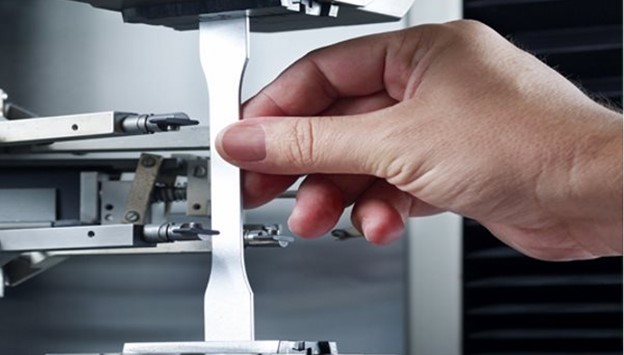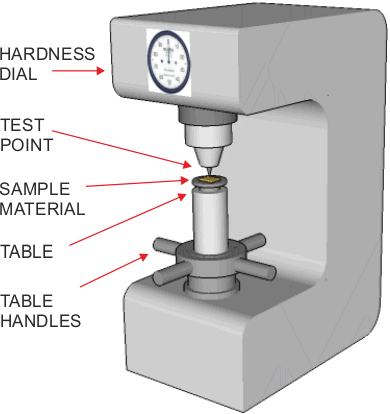Boost Outcomes with Our Materials Test Lab Knowledge
Wiki Article
From Concept to Reality: The Relevance of Products Screening in Product Development
Worldwide of product development, the trip from concept to reality is a facility and elaborate process. One vital element that often goes undetected yet plays an important duty is products screening. Materials screening is the systematic exam and examination of the properties and behavior of different products made use of in product growth. It involves defining material needs, conducting toughness and toughness screening, reviewing chemical structure and compatibility, and assessing safety and security and performance standards. By subjecting materials to strenuous testing, item developers can make the most of product quality, integrity, and inevitably, consumer fulfillment. This post checks out the significance of materials screening in product development and highlights its relevance in turning ingenious concepts into substantial, successful items.Defining Material Demands

To define material demands accurately, extensive research study and evaluation are required. The product advancement group need to take into consideration aspects such as mechanical residential properties, chemical longevity, compatibility, and cost-effectiveness. They should likewise take into consideration any regulative or safety standards that the item needs to fulfill.
One of the crucial purposes in specifying product demands is to determine products that can stand up to the awaited tensions and pressures the item will certainly experience throughout its lifecycle. This includes taking into consideration elements such as temperature level changes, exposure to moisture or chemicals, and mechanical pressures. By picking materials that can endure these conditions, the item's efficiency and longevity can be enhanced.
Additionally, defining material demands likewise includes taking into consideration the tactile and visual qualities of the products. The aesthetic allure, structure, and really feel of the item play a substantial function in its bankability and customer experience.
Conducting Strength and Sturdiness Checking
To ensure the reliability and durability of a product, performing strength and sturdiness testing is crucial in the product development process. This kind of testing permits manufacturers to understand how a product will perform under different problems and anxiety levels, assisting them make educated choices regarding design adjustments and material choices.Strength testing involves subjecting a product to regulated forces to determine its capacity to hold up against lots and pressure. This can be done through examinations such as stress, compression, flexing, and torsion examinations. By determining the product's response to these pressures, designers can analyze its architectural integrity and recognize any type of weaknesses or possible failure points.

Assessing Chemical Make-up and Compatibility
Chemical make-up and compatibility analysis is an essential action in the product growth procedure as it permits producers to evaluate the viability of materials for their intended applications. Recognizing the chemical make-up of a product is vital to make sure that it meets the necessary requirements for capability, performance, and safety.Throughout the assessment procedure, makers evaluate the chemical make-up of materials to identify their residential properties, such as resilience, toughness, and resistance to deterioration. This information aids in selecting one of the most ideal materials for certain applications, as various materials might have differing chemical compositions that impact their performance.
Compatibility assessment is similarly crucial, as it makes sure that the products utilized in an item are suitable with each other and with any type of various other substances they may enter into call with. Conflict can result in chemical responses, deterioration, or perhaps failure of the product.
To evaluate chemical compatibility, suppliers perform tests to imitate real-world problems and analyze exactly how different materials communicate. These tests may include direct exposure to different temperatures, pressures, and chemicals. The results of these examinations help producers determine any kind of possible concerns and make educated choices concerning material option and layout modifications.
Assessing Safety and Performance Criteria
Suppliers have to thoroughly assess security and performance standards to make certain the top quality and reliability of their items. The analysis of security requirements entails assessing the item's capacity to run safely and without posing any type of threats to consumers. This includes evaluating whether the item fulfills industry-specific security policies and standards, in addition to carrying out examinations to determine possible hazards and threats. Efficiency standards, on the other hand, emphasis on assessing the product's capability to meet specific efficiency criteria and specs. This entails screening the item under various conditions to ensure that it carries out as anticipated and satisfies the demands of the desired individuals. By assessing security and efficiency requirements, producers can determine any type of potential concerns or drawbacks in their products and take the needed actions to address them. This not only helps in guaranteeing the security of customers but also boosts the general high quality and reliability of the products. It is critical for manufacturers to buy comprehensive testing and analysis procedures to construct depend on with their consumers and keep their track record in the market.
Making Best Use Of Product Top Quality and Reliability
By making sure the complete assessment of security and efficiency standards, makers can efficiently make best use of the high quality and integrity of their products. Maximizing product quality and integrity is essential for companies to get a competitive edge and preserve customer complete satisfaction - materials more info here test lab. To attain this, producers need to employ strenuous testing methods throughout the item growth procedureOne crucial facet of making best use of item quality and dependability is carrying out comprehensive products screening. This includes reviewing the homes and features of the materials made use of in the production of the item. By testing the products for elements such as toughness, resistance, and durability to ecological conditions, makers can determine prospective weak points and make needed improvements to boost the overall top quality and reliability of the product.
In addition, makers must likewise take into consideration making use of innovative testing methods, such as non-destructive testing (NDT) NDT enables the analysis of a product's honesty without triggering damage, guaranteeing that the quality and integrity of the product are not compromised during the screening procedure.
Moreover, manufacturers need to continually keep track of and examine the performance of their items in real-world problems. This anchor can be done through field testing and gathering responses from customers. By accumulating and examining data on item efficiency, suppliers can recognize locations for renovation and make required adjustments to boost the high quality and integrity of their items.
Conclusion
To conclude, materials testing plays a critical function in item growth by making sure that the products used fulfill the needed demands for toughness, longevity, chemical make-up, compatibility, safety and security, and performance criteria. By carrying out detailed testing, manufacturers can maximize the top quality and integrity of their items - materials test lab. It is necessary to focus on materials testing throughout the advancement process to guarantee the effective awareness of concepts right into concrete itemsMaterials screening is the systematic evaluation and evaluation of the buildings and behavior of numerous materials utilized in product development. By subjecting products to extensive screening, product programmers can maximize product top quality, reliability, and ultimately, customer fulfillment.One of the key objectives in specifying product demands is to determine materials that can stand up to the expected stress and anxieties and stress the More Info item will certainly experience during its lifecycle. By collecting and examining data on product efficiency, suppliers can determine locations for renovation and make necessary adjustments to boost the high quality and integrity of their products.
In conclusion, materials screening plays an essential duty in product growth by ensuring that the products utilized satisfy the necessary requirements for stamina, sturdiness, chemical composition, efficiency, safety and security, and compatibility requirements.
Report this wiki page